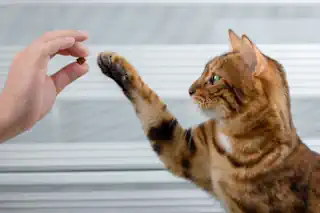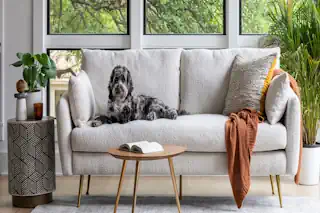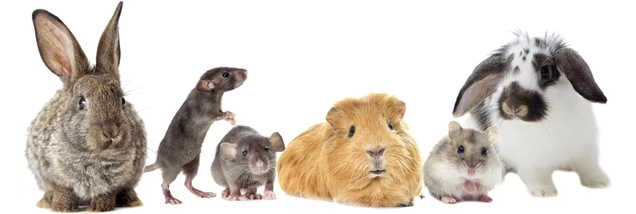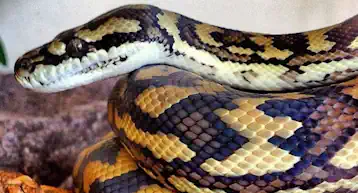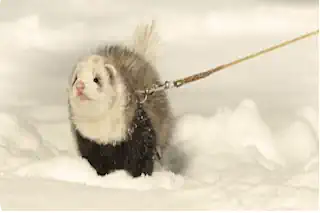How to Groom Your Pet: A Tail-Wagging Guide for Pet Parents
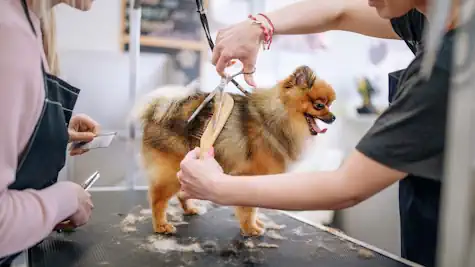
Hey there, fellow pet enthusiasts! We know that keeping your furry friends looking and feeling their best is a top priority. In this blog post, we’ll take a deep dive into the world of pet grooming. From the why to the how we’ve got you covered with all the essentials you need to turn grooming from a chore into a delightful bonding activity with your pet.
Understanding Your Pet’s Grooming Needs: Dog vs. Cat, Long-Haired vs. Short-Haired
First off, know this—every pet is as unique as their human! Just like us, pets have their own grooming needs depending on a variety of factors. The type of coat, whether your fur baby is a proud pup or a cool kitty, all play into their grooming routine. It’s important to start with the basics and adjust your approach based on your pet’s breed, size, and lifestyle.
Essential Grooming Tools and Products
Equipping yourself with the right tools is half the battle won. Imagine trying to paint a masterpiece without the right brushes! Here’s what’s going to be your arsenal:
- A good quality shampoo that’s appropriate for your pet’s skin type
- Brushing tools that are suited to your pet’s coat length and texture
- Nail clippers specially designed for pets
- Ear cleaning solution and cotton balls or pads
- A pet-friendly toothbrush and toothpaste for dental care
- A de-matting tool or comb for pets with longer coats
- Pet-safe wipes for quick clean-ups between baths
- A grooming table or nonslip mat to keep your pet steady and comfortable
- Towels and a pet-specific blow dryer for drying after baths
- Tear stain remover for pets prone to tear stains, like some dog breeds
- Treats to reward your pet and make grooming sessions more enjoyable
These essentials will help keep your pet clean, comfortable, and maybe even runway-ready!
Step-by-Step Guide to Grooming: Bathing, Brushing, Nail Trimming, and Ear Cleaning
Where do we begin? With our step-by-step guide, you will feel like a pet grooming guru in no time.
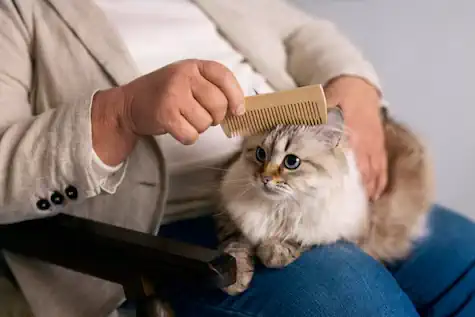
- Bathing is not just splishing and splashing. Ensure the water is lukewarm and that you’re using pet-friendly shampoo.
- Brushing isn’t just to keep them looking pretty—it detangles hair and spreads essential oils throughout the coat.
- Nail trimming is crucial. Those click-clack sounds on the floor aren’t tap dance approvals; those nails need a trim!
- Ear cleaning must be done carefully; always be gentle and never insert anything deep into the ear canal.
- Dental care is often overlooked but essential. Regularly brush your pet’s teeth with pet-safe toothpaste to prevent dental issues and bad breath.
- Eye care is necessary, especially for breeds prone to tear staining. Use a tear stain remover and keep the eye area clean and dry.
- Trimming paw pads can make walking more comfortable for your pet. Carefully trim the fur between your pet’s paw pads to prevent matting and slipping.
- Anal gland expression might not be pleasant, but it’s vital for pets susceptible to gland issues. If you’re unsure, your vet or groomer can show you how to do this safely.
- Clipping or trimming fur is sometimes needed, especially for long-haired breeds. Use sharp, pet-safe clippers or scissors and trim with care to avoid accidents.
- Checking for parasites like ticks and fleas is crucial, especially during warmer months. Regularly inspect your pet’s coat and use preventative treatments as advised by your vet.
- Skin inspection should be done regularly to spot any unusual bumps, rashes, or signs of irritation. Early detection can prevent many health issues.
These additional steps will ensure that your pet’s grooming routine is comprehensive and tailored to their unique needs, keeping them healthy and happy.
Grooming Tips for Specific Breeds
Got a luscious Maine Coon or a stately German Shepherd? Specific breeds require specific grooming love. We’ve gathered a few tips for various popular breeds to ensure you’re tending to their unique needs.
- Persian Cats: Known for their long, luxurious coats, Persian cats need daily brushing to prevent matting and tangles. Pay particular attention to their undercoat and use a wide-tooth comb. Regularly clean their eyes to prevent tear staining.
- Siberian Huskies: These energetic dogs have a double coat that sheds heavily twice a year. During shedding seasons, use an undercoat rake to remove loose hair from the dog’s coat and reduce shedding. Regular brushing is still required throughout the year.
- Poodles: With their curly coats, Poodles require frequent grooming to avoid matting. Brush them a few times a week and consider regular professional grooming to keep their coats in top shape. Also, check their ears for any signs of infections. A dog’s fur in the ear can create problems for most dogs.
- Shih Tzus: These adorable pups need daily brushing due to their long coats. Use a detangling spray and a soft brush to keep their dog’s hair smooth and tangle-free. Regular trims around the eyes are necessary to keep their vision clear.
- Maine Coons: These majestic cats are prone to tangles, especially on their belly and underarms. Brush them at least twice a week with a metal comb and a slicker brush to keep their coat healthy and shiny. Remove dead hair to help them stay cool and happy.
- Dachshunds: Depending on whether they have smooth, wire-haired, or longhaired coats, Dachshunds have different grooming needs. Short-haired dogs with smooth coats need minimal grooming, while wire-haired and long-haired dogs require regular brushing and occasional trimming.
- Cocker Spaniels: These dogs have beautiful, long ears that are prone to matting and infection. Brush their coat several times a week and clean their ears regularly. Pay special attention to the feathering on their legs and chest.
- Ragdoll Cats: Known for their silky, semi-long fur, Ragdolls need regular brushing to prevent tangles and reduce shedding. Use a stainless steel comb and be gentle to avoid hurting their delicate skin. Getting rid of the dead hair will go a long way to minimizing cat health issues.
- Golden Retrievers: With their dense water-repellent coats, Golden Retrievers need regular brushing to maintain their health. Use a slicker brush and an undercoat rake to manage shedding and keep their coat shiny. These dog’s nails also need regular trimming.
- Yorkshire Terriers: These small dogs have hair similar to human hair. They need daily brushing to prevent tangles and matting. Regular trims to maintain their coat length are essential, and cleaning around their face is crucial to keep the dog’s eyes free from irritation.
Tailoring your grooming routine to meet the specific needs of your pet’s breed will not only help keep them looking fabulous but also ensure their overall health and comfort. Dog’s teeth are especially important to keep clean as many breeds have long histories of dental issues.
Common Grooming Mistakes to Avoid
Sometimes, it’s the little things we don’t know that could make a significant difference. Missteps like using human products on pets or over-bathing can lead to issues down the road. Stick to the pet-safe avenues!
Top 5 Grooming Mistakes to Avoid
Avoiding these common grooming mistakes can ensure your pet remains healthy and happy:
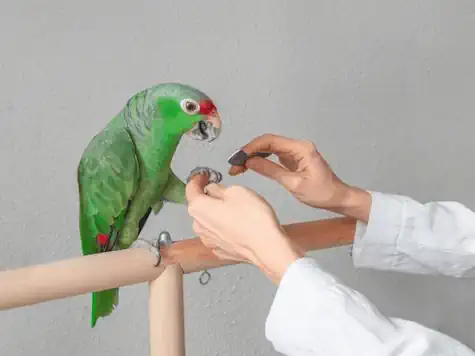
- Using Human Products: Human shampoos and conditioners are not formulated for pets and can cause skin irritation and dryness. Always use products specifically designed for your pet’s needs.
- Over-Bathing: Bathing your pet too frequently can strip their skin of natural oils, leading to dryness and irritation. Stick to a bathing schedule recommended for your pet’s breed and coat type.
- Neglecting Regular Ear Cleaning: Improper or infrequent ear cleaning can lead to infections. Always gently clean your pet’s ears and avoid inserting anything deep into the ear canal.
- Skipping Dental Care: Dental hygiene is critical for your pet’s overall health. Ignoring regular teeth brushing can result in plaque buildup, bad breath, and more severe dental issues.
- Improper Nail Trimming: Cutting nails too short can cause pain and bleeding. Familiarize yourself with the correct technique or seek guidance from a professional to avoid hurting your pet.
By steering clear of these pitfalls, your grooming sessions will be more effective and enjoyable for both you and your furry friend.
Creating a Grooming Schedule
Consistency is key when maintaining your pet’s grooming routine. Avoid those last-minute rushes before visitors come over by setting a grooming schedule that suits you and your pet.
Grooming Needs for Other Pets
Not all pets have fur that needs brushing. Critters like mice, rats, ferrets, birds, reptiles, and others have unique grooming requirements. Here’s how to keep these special pets happy and healthy:
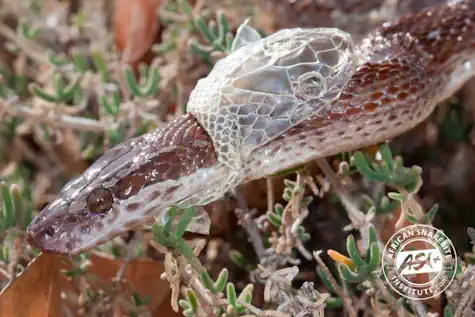
- Mice and Rats: These small mammals are generally good at self-grooming. However, providing them with safe, soft bedding can help them keep clean. Regularly clean their cages to prevent odor and reduce health risks.
- Ferrets: Ferrets are playful and require regular ear cleaning and occasional bathing. Use a ferret-safe shampoo and clean their ears gently with a vet-recommended solution. Trim their nails regularly to prevent scratches.
- Birds: Regular cage cleaning is essential for birds. Depending on their species, they may benefit from gentle misting with water or access to a bird bath to keep their feathers in good condition. Trim their nails and beaks as needed, but consult a vet for proper techniques.
- Snakes: Snakes shed their skin periodically. To aid in this process, ensure their habitat has the right humidity levels and provide rough surfaces like rocks or branches they can rub against. Always clean their enclosure regularly to maintain a healthy environment.
- Lizards: Like snakes, lizards also shed their skin. Keep their habitat well-maintained with appropriate humidity and temperature. Some lizards enjoy a good soak in warm water to help with shedding. Nails may need trimming for certain species.
- Guinea Pigs: These furry friends need regular brushing to prevent matting and promote a healthy coat. Long-haired varieties require more frequent grooming. Keep their nails trimmed and their cages clean.
Keeping these unique pets well-groomed requires understanding their specific needs, providing a clean environment, and making regular grooming is a part of their regular care routine. Small efforts go a long way in ensuring they remain comfortable and healthy.
Conclusion: The Bonding Experience of Grooming Your Pet
Lastly, remember that grooming is more than just maintenance—it’s a special time to bond with your companion. Those moments you spend can strengthen the love and trust between you both. Now, go on and make some suds, snip some nails, and cherish those cuddles afterward.
Frequently Asked Questions (FAQ)
How often should I groom my pet?
It depends on the breed and type of pet you have. Some pets, like Yorkshire Terriers and long-haired guinea pigs, require daily grooming, while others, like Ragdoll cats and ferrets, might only need it a few times a week. Always tailor your home grooming and routine to meet the specific needs of your pet.
Can I use human shampoo on my pet?
No, it’s best to avoid using human products on your pets. Human shampoos and conditioners can irritate their skin and strip natural oils. Always use products specifically designed for pets.
How do I know if I’m over-bathing my pet?
Look out for signs like dry, flaky skin or a dull coat. Bathing schedules can vary by breed, so consult with your veterinarian to determine the optimal bathing frequency for your specific pet.
What should I do if I accidentally cut my pet’s nail too short?
If you cut your pet dog’s skin or nail too short and it starts to bleed, you can use a styptic powder to stop the bleeding. Cornstarch or baking powder can also serve as alternatives in a pinch. Apply gentle pressure with a clean cloth until the bleeding stops.
How can I make grooming a positive experience for my pet?
Start grooming when your pet is young to get them used to the process. Use plenty of positive reinforcement such as treats and praise. Keep grooming sessions short initially and gradually extend the time as your pet becomes more comfortable.
What should I do if my pet’s ears have a bad odor or discharge?
A bad odor or discharge from your pet’s ears could indicate an infection. It’s best to consult your veterinarian for a proper diagnosis and treatment. Regular ear cleaning can help prevent infections.
Is dental care really necessary for my pet?
Absolutely! Regular dental care can prevent plaque buildup, bad breath, and more severe health issues like gum disease and infections. Daily brushing is ideal, but even a few times a week can make a significant difference.
How do I help my snake shed its skin properly?
Maintain the right humidity levels in your snake’s habitat and provide rough surfaces for them to rub against. A shallow soaking dish can also help your snake during the shedding process. Ensure the environment is clean and well-maintained.
What are some safe bedding options for small mammals like mice and rats?
Opt for soft, absorbent bedding like paper-based products or aspen shavings. Avoid pine and cedar wood shavings as they can be harmful. Regularly clean their cages to maintain a healthy living environment.
How do I know if my bird needs a nail trim?
Birds’ nails should be trimmed if they start to curl or if the bird has trouble perching. It’s best to consult a veterinarian or a professional groomer to avoid causing injury to your bird.
Keeping your pets well-groomed is a loving commitment that pays off in the form of a happier, healthier companion. If you have any additional questions or concerns, don’t hesitate to contact your veterinarian for personalized advice.
